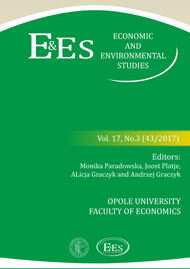Environmental Classification of Products in a Context of Ecodesign in Small and Medium Enterprises
Environmental Classification of Products in a Context of Ecodesign in Small and Medium Enterprises
Author(s): Katarzyna JOACHIMIAK-LECHMAN, Anna Lewandowska, Tomasz Strózik, Dorota StrózikContributor(s): Monika Paradowska (Editor), Johannes (Joost) Platje (Editor), Alicja Małgorzata Graczyk (Editor), Andrzej Graczyk (Editor)
Subject(s): Economy, Business Economy / Management, Micro-Economics, Energy and Environmental Studies
Published by: Uniwersytet Opolski
Keywords: ecodesign; cluster analysis; products classification; small and medium enterprises;
Summary/Abstract: More and more often a life cycle thinking is considered as a valuable element of environmental management. Product-based environmental management systems often refer to ecodesign, which can be used in various aspects of product management. Due to their own specificity, small and medium enterprises (SMEs) often encounter difficulties when conducting ecodesign activities. The paper presents a simplified approach based on the life cycle-based environmental classification of products intended for using in SMEs as a starting point for eco-design. A main goal of the paper is to propose such classification and discuss its role in improving the environmental performance of products. The presented analysis included 50 products classified according to the chosen criteria. As the first step, a cluster analysis has been performed and a distinction between passive and active products has been made. A main conclusion was that the information received from the cluster analysis may be insufficient to be a sole basis for ecodesign. A second classification has been performed basing on the selected environmental impact indicators (GWP100a and CED) calculated for three life cycle stages: a production, an use and a final disposal. The final products’ classification reflects the differences in environmental hotspots between products and can be used for supporting the SMEs in implementation of life cycle-based eco-design processes.
Journal: Economic and Environmental Studies
- Issue Year: 17/2017
- Issue No: 3 (43)
- Page Range: 491-513
- Page Count: 23
- Language: English

